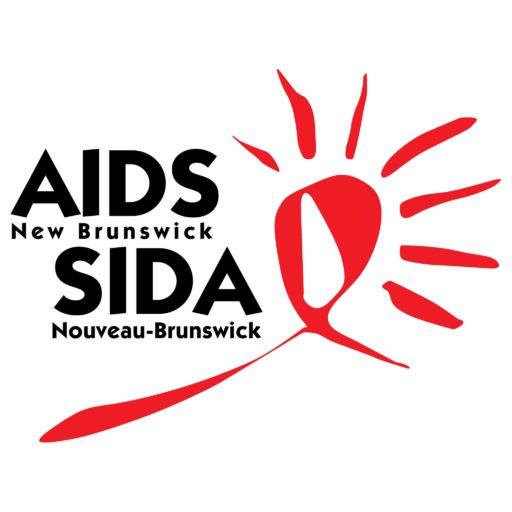HIV/AIDS
Question about HIV? Whether you have come to this page awaiting HIV test results or because of a potential exposure to HIV, take a deep breath. We understand that there is a lot of fear and worry that comes with testing positive for HIV. You are not alone, this is a very common feeling and is caused by HIV stigma, misinformation and what we have been told about what it means to live with HIV. We want you to know there is support available and we can help you access it.
Want to access additional information on HIV or where to access HIV testing/care in your area?
Call our anonymous and confidential STBBI infoline 1-833-561-4009 (Mon-Fri, 8:30am- 4:30pm)
TRANSMISSION
HIV is transmitted through 5 bodily fluids. These are vaginal fluid, anal fluid, blood, semen (including pre cum), and breast milk. HIV is transmitted when one of these enters a break in the
skin or the mucous membrane (the wetlinings of the body) like the opening of the penis, the foreskin, the vagina, or the rectum. This can be done through:
- Sexual activity without a condom or other barrier (Such as anal or vaginal sex, giving
oral sex and sharing sex toys) - Sharing or reusing needles and other supplies used for injecting drugs (including
steroids and hormones), tattooing, piercing and accidental needle poke injuries. - Pregnancy, childbirth and chest feeding ( for transmission to an infant or fetus)
TRANSMISSION
HIV is transmitted through 5 bodily fluids. These are vaginal fluid, anal fluid, blood, semen (including pre cum), and breast milk. HIV is transmitted when one of these enters a break in the
skin or the mucous membrane (the wetlinings of the body) like the opening of the penis, the foreskin, the vagina, or the rectum. This can be done through:
- Sexual activity without a condom or other barrier (Such as anal or vaginal sex, giving
oral sex and sharing sex toys) - Sharing or reusing needles and other supplies used for injecting drugs (including
steroids and hormones), tattooing, piercing and accidental needle poke injuries. - Pregnancy, childbirth and chest feeding ( for transmission to an infant or fetus)
PREVENTION
Prevention Options:
- PrEP (Pre-Exposure Prophylaxis)- a daily medication used by people who are HIV negative to prevent them from getting HIV.
- PEP (Post-Exposure Prophylaxis)- consists of medications a person can take after they might have come into contact with HIV, to prevent them from getting HIV.
- Condoms
- Choosing sexual activities that have a lower risk of transmission (https://www.catie.ca/hiv-transmission)
- New equipment for using drugs.
PREVENTION
Prevention Options:
- PrEP (Pre-Exposure Prophylaxis)- a daily medication used by people who are HIV negative to prevent them from getting HIV.
- PEP (Post-Exposure Prophylaxis)- consists of medications a person can take after they might have come into contact with HIV, to prevent them from getting HIV.
- Condoms
- Choosing sexual activities that have a lower risk of transmission (https://www.catie.ca/hiv-transmission)
- New equipment for using drugs.
TESTING
The only way to know if a person has HIV is to get tested! This can be done through your healthcare provider or at a local sexual health clinic that offers walk-in testing. In order to receive an HIV diagnosis a person must have tested positive on a screening test and then a confirmatory test. HIV tests are confidential and can be: nominal (name-based), non-nominal (not identifying), or anonymous.
*Note: not all NB clinics have each of these testing options available, some places may only provide nominal testing.
TESTING
The only way to know if a person has HIV is to get tested! This can be done through your healthcare provider or at a local sexual health clinic that offers walk-in testing. In order to receive an HIV diagnosis a person must have tested positive on a screening test and then a confirmatory test. HIV tests are confidential and can be: nominal (name-based), non-nominal (not identifying), or anonymous.
*Note: not all NB clinics have each of these testing options available, some places may only provide nominal testing.
TREATMENT
There are many drugs available today that treat HIV by preventing the virus from replicating further in the body. When on effective treatment, people who are HIV positive can live long and healthy lives and avoid passing the virus on to others. Treatment should be started as soon as possible after a person is diagnosed with HIV. To make sure treatment is working people with HIV should have regular healthcare visits to check their viral load and for other monitoring
U=U (Undetectable= Untransmittable)
HIV treatment can reduce the amount of virus (viral load) in the body to undetectable levels. Evidence shows that people living with HIV who are on treatment and have an undetectable viral load do not transmit the virus to their sexual partners.
TREATMENT
There are many drugs available today that treat HIV by preventing the virus from replicating further in the body. When on effective treatment, people who are HIV positive can live long and healthy lives and avoid passing the virus on to others. Treatment should be started as soon as possible after a person is diagnosed with HIV. To make sure treatment is working people with HIV should have regular healthcare visits to check their viral load and for other monitoring
U=U (Undetectable= Untransmittable)
HIV treatment can reduce the amount of virus (viral load) in the body to undetectable levels. Evidence shows that people living with HIV who are on treatment and have an undetectable viral load do not transmit the virus to their sexual partners.
